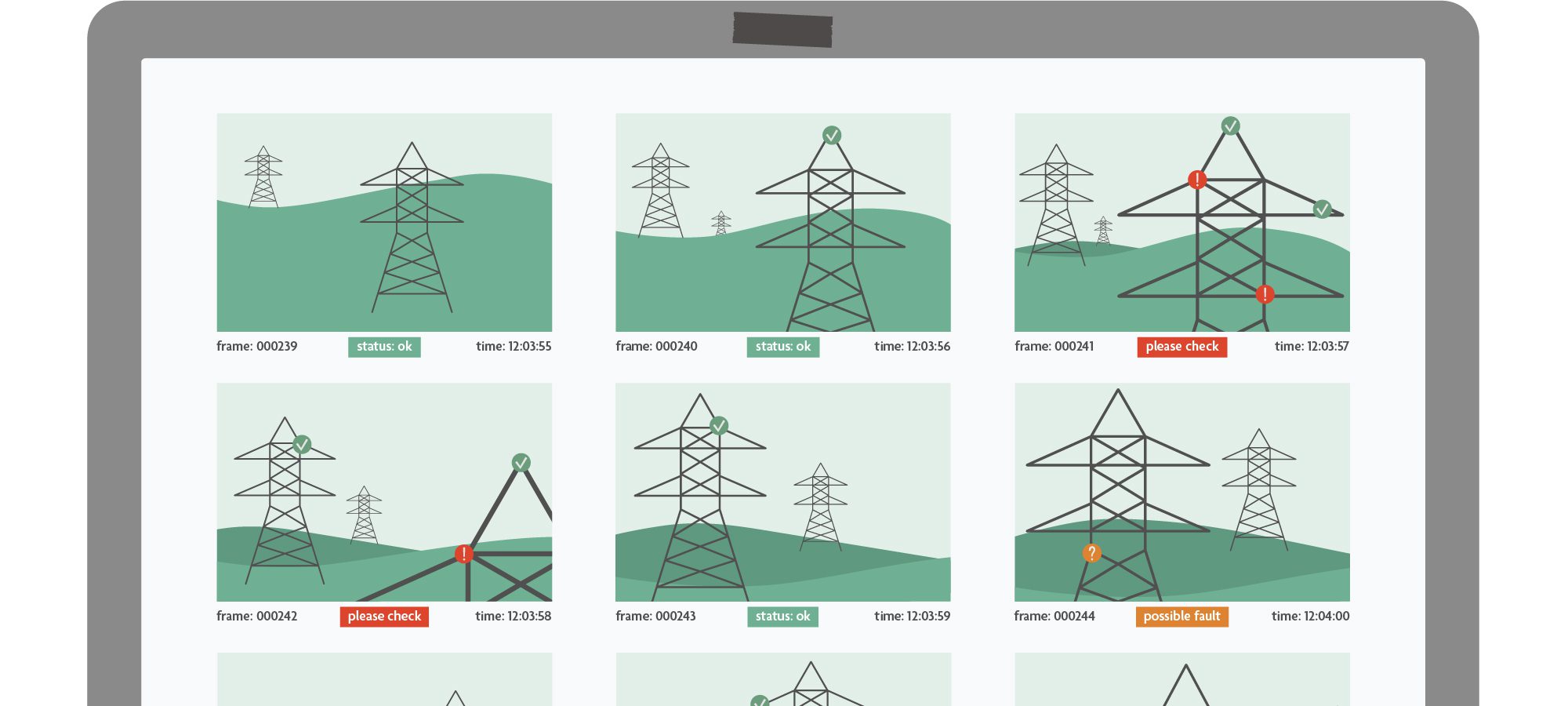CopernNet : Point Cloud Segmentation using ActiveSampling Transformers
In the dynamic field of railway maintenance, accurate data is critical. From ensuring the health of ...
Published on: March 9, 2020
Infrastructure asset inspections with drones not only require careful preparation, but also a lot of post-processing. Kapernikov recently demonstrated its data processing skills for a drone inspection project at Elia.

To ensure the effective operation of an organization’s assets, asset managers need to plan regular inspections of their equipment. Drone inspections have big advantages over traditional, time-consuming inspection methods, where workers need to physically access dangerous environments and where height, wind or weather can lead to accidents.
However, automated drone inspections often generate huge piles of data that need to be processed afterwards. Ideally, data processing is done in an automated way, by means of deep learning. But before smart algorithms can do anything meaningful, they need to be trained first.
Training an algorithm means feeding it with lots of examples so it can improve and become better in doing the required task (e.g. recognizing an object in a picture). Kapernikov is an expert in the training of algorithms and recently demonstrated its expertise to Elia, in a project to help the Belgian electricity grid operator to process data coming from drone inspections.
To ensure reliable transmission of electricity, Elia performed visual inspections of its infrastructure (pylons and overhead lines). The data collected during these inspections needed to help the company to improve asset maintenance and develop more efficient maintenance policies.
For the visual inspection of its electricity pylons and overhead lines, Elia chose to use drones. Although Elia had tried many other forms of inspections, drone inspections have a number of advantages.
Drone inspections are:
Because drone inspections are so productive, a lot of collected asset data will need to be analyzed afterwards. The defects found during these inspections will need to be labeled accurately. In the case of Elia’s visual pylon inspections, Kapernikov has helped to do the first rounds of manual (non-automated) annotation and data quality checks.
Of course, the objective is that these analyses will become much more automated. For example, in an ideal scenario, an algorithm should be able to draw frames around the detected defects, classify those defects and link them with the corresponding asset. All of this makes a final data quality check much faster and efficient.
The best way to survey large, complex structures is from the air. Drone technology has become so accessible today that many asset managers and maintenance professionals have embraced this inspection method.
However, in order to get the most out of an asset inspection with drones, a lot of preparation and post-processing is needed. That is where Kapernikov’s experience with large infrastructure organizations can make a difference.
Managing an asset inspection campaign with drones not only requires organizational and data-related skills, it also requires effort and time to become familiar with the technical nature and complexity of the customer’s equipment.
In the case of Elia, Kapernikov consultants immersed themselves in the subject matter of pylons, electrical power lines and other related infrastructure, so they would be able to make informed decisions during the project. This is definitely one of the strengths of working together with Kapernikov.
Every asset inspection project is different, but Kapernikov does what needs to be done to make sure that asset and maintenance professionals have the asset data they need to make better decisions.
Subscribe to our newsletter and stay up to date.
